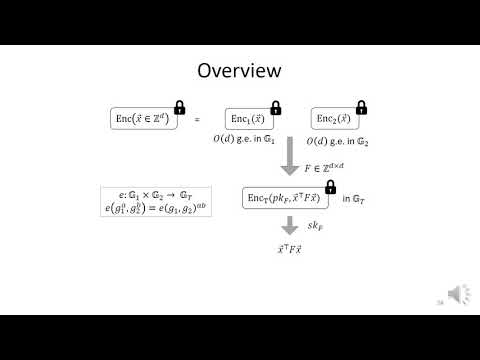CryptoDB
A New Paradigm for Public-Key Functional Encryption for Degree-2 Polynomials
| Authors: | |
|---|---|
| Download: | |
| Abstract: | We give the first public-key functional encryption that supports the generation of functional decryption keys for degree-2 polynomials, with succinct ciphertexts, whose semi-adaptive simulation-based security is proven under standard assumptions. At the heart of our new paradigm lies a so-called partially function-hiding functional encryption scheme for inner products, which admits public-key instances, and that is sufficient to build functional encryption for degree-2 polynomials. Doing so, we improve upon prior works, such as the constructions from Lin (CRYPTO 17) or Ananth Sahai (EUROCRYPT 17), both of which rely on function-hiding inner product FE, that can only exist in the private-key setting. The simplicity of our construction yields the most efficient FE for quadratic functions from standard assumptions (even those satisfying a weaker security notion). The interest of our methodology is that the FE for quadratic functions that builds upon any partially function-hiding FE for inner products inherits the security properties of the latter. In particular, we build a partially function-hiding FE for inner products that enjoys simulation security, in the semi-adaptive setting, where the challenge sent from the adversary can be chosen adaptively after seeing the public key (but before corrupting functional decryption keys). This is in contrast from prior public-key FE for quadratic functions from Baltico et al. (CRYPTO 17), which only achieved an indistinguishability-based, selective security. As a bonus, we show that we can obtain security against Chosen-Ciphertext Attacks straightforwardly. Even though this is the de facto security notion for encryption, this was not achieved by prior functional encryption schemes for quadratic functions, where the generic Fujisaki Okamoto transformation (CRYPTO 99) does not apply. |
Video from PKC 2020
BibTeX
@article{pkc-2020-30284,
title={A New Paradigm for Public-Key Functional Encryption for Degree-2 Polynomials},
booktitle={Public-Key Cryptography – PKC 2020},
series={Public-Key Cryptography – PKC 2020},
publisher={Springer},
volume={12110},
pages={95-120},
doi={10.1007/978-3-030-45374-9_4},
author={Romain Gay},
year=2020
}

